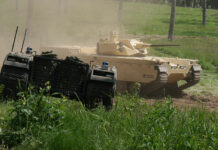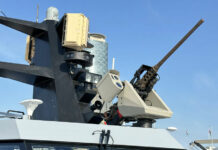The Egyptian-brokered informal truce, or “Tahdiya” started Thursday, June 19, at 0600 hours and seems to be holding sofar. This not surprising, as Hamas has everything to gain and nothing to lose if it abides to it’s Tahdiya, until it can restart the war, on it’s own interest. Israel, on the other hand, has already tied the IDF to strict open-fire orders, which leave little scope for effective counter action, if so-called “irregulars” will open fire or plant exposives, on their own. It all happened before and it will again, when the time is right for Hamas.
 The Egyptian government succeeded in securing a temporary cease-fire agreement [tahdiya] between Israel and Hamas. Hamas regards the temporary cease-fire as a tahdiya and not a hudna. A hudna implies recognition of the other party’s actual existence, without acknowledging its legitimacy. As Hamas’ leader Khaled Mashaal explained, a tahdiya is “a tactic in conflict management.”
The Egyptian government succeeded in securing a temporary cease-fire agreement [tahdiya] between Israel and Hamas. Hamas regards the temporary cease-fire as a tahdiya and not a hudna. A hudna implies recognition of the other party’s actual existence, without acknowledging its legitimacy. As Hamas’ leader Khaled Mashaal explained, a tahdiya is “a tactic in conflict management.”
Senior columnist Sever Plocker severely criticized Ehud Olmert’s decision to accept the Hamas “Tahdiya”. Plocker in an article in Ynet: “When we talk about a Tahdiyah (Calm) agreement with Hamas,” the word calm isn’t the problem. Rather, the agreement with Hamas is the problem”.
According to Plocker, en route to the so-called “truce” agreement, Olmert’s government shattered Israel’s most important strategic advantage it possessed ever since Hamas came to power last June: The advantage of refusal. The refusal to engage in dialogue with Hamas, the refusal to recognize the legitimacy of its rule, the refusal to compromise with it, and the implied refusal to give Hamas international legitimacy. The Israeli public was mistakenly presented with only two options – a massive military operation, or appeasement. There was a third way too: Ongoing blows delivered at terror centers and leaders.
Had Israel persisted in its refusal to recognize Hamas, the regime in Gaza would have collapsed or fundamentally changed. Yet surprisingly, Israel deserted the path of refusal a short time after it managed, through great efforts, to convince Europe, the United States, Russia, and the United Nations to establish a united refusal front. Yet Jerusalem was the first to cut out a window in the boycott wall. Without making any diplomatic-ideological-strategic concession, Hamas was recognized by Israel as the legitimate master of the Gaza Strip, the authentic representative of the Palestinian people, and a partner for agreements of one kind or another. This is a priceless gift for Hamas. Without it, placed under continued pressure, both militarily and economically, Hamas would soon or later succumb. Yet surprisingly, it was not the weakened Hamas leadership that capitulated but the stronger Israel and its weak leadership.
Not only could the Hamas leadership congratulate themselves on their extraordinary coup, the second in only two years, after their brilliant take-over from Fatah. Iranian sources reported that Iran’s top leaders held a special meeting in Tehran Thursday, June 19, 2008, just hours after the Gaza ceasefire went into force. They too congratulated themselves for achieving their second base on a Mediterranean shore after winning control of Lebanon through Hezbollah’s takeover of Beirut and its government. In fact, it seems that Iran has already tightened its noose around Israel as well as Egypt, a move which should, under circumstances cause considerable alarm.
But the “peace-at-any-price brigade” in Israel, are already chuckling happily, as expected, over the Hamas / Israel six-month ‘ceasefire’. Little do they ponder over the consequences, should this “treaty”, as happened so often in the past fail, with even more sinister repercussions. History has more than enough examples to show:
Mr. Neville Chamberlain on 30 September 1938 declared the accord with the Germans signaled “peace for our time”, after he had read it to a jubilant crowd gathered at Heston airport in west London. A year later Great Britain was fighting for its very life against Hitler’s Nazi hordes.
But only two years later, in June 1940, during the Blitz, Adolf Hitler’s Germany sought to embark on secret indirect talks with Britain. Winston Churchill rejected these feelers out of hand. If we embark on any kind of contacts, he warned, we shall quickly find ourselves on a slippery slope that would ultimately lead to acceptance of the evil Nazi regime, based on the argument that this is reality and that it “represents the Germans.” Churchill was not tempted, and saved civilization. Unfortunately, the lesson of 1938 and 1940 and those which followed them, are sometimes forgotten and the consequences, as usual, are paid by the people.
Indeed, many Israelis across the political board have expressed deep frustration as an Egyptian-brokered ceasefire with the Hamas-ruled Gaza Strip went into effect early Thursday morning. A ‘victorious’ Hamas already warned of severe responses from its side, if Israel was the first to disturb the fragile “peace”. To show that it meant business, just hours before the ceasefire went into effect, Hamas rocket crews pounded southern Israel with a barrage of rockets and mortar shells to drive home the point, who the Boss in Gaza was. Israeli opposition leader Benjamin Netanyahu said on Israel Radio that he found it mind-boggling, that Olmert’s government would re-enter into yet another ill-advised ceasefire that everyone knew would be used by the terrorists to regroup and rearm for future aggression. It is a well known fact, that all previous informal ceasefires between Israel and Hamas had lasted, at best only for a few months, but in reality were punctuated by sporadic attacks, by so-called “irregulars”, while strict limitations on Israel’s military response allowed the terrorists to simultaneously keep pressure, without the “Hudna” being officially compromised.
Israelis who have been living around the Gaza Strip are under no illusion, as to what the future forebodes. For no less than eight years they have been subjected to a daily barrage of rockets, mortars and sniping, while trying to live a “normal” life under impossible conditions. Not that a few kilometers to their west, inside the Hamas ruled Gaza Strip, ordinary people were better off. Both suffered the same hardship, placed upon their shoulders by irresponsible, corrupt and ignorant leaders- who were looking entirely after their own political survival.
Even the hard core of Israel’s military leadership has repeatedly warned decision-makers, in vain, that the truce will only strengthen Hamas rule in Gaza, further decreasing the likelihood that the territory will revert to the control of moderate Palestinian elements more palatable to Israel and Western peace brokers. Some of the more outspoken officers, have indicated that they failed to understand why Israel is granting Hamas a respite that will almost surely be exploited to bolster the terror group’s defensive and offensive capabilities, in addition to its grip on the local population. Mentioning that the Egyptian-brokered ceasefire actually placed no limitations on Hamas activities inside Gaza, and even if it did, there is no monitoring mechanism available in place. Hamas will be at full liberty to continue smuggling arms into Gaza, as their leader, Ismail Haniyeh openly told the press on Saturday. The Hamas military will continue to plant explosive charges in buildings, built bunkers within sight of the border line and dig tunnels. Once the Tahdiya will end, the Gaza Hamastan will be ready to confront the IDF in July 2006, just as Hezbollah was, six years after it’s forced withdrawal in May 2000.
To guess what lies in store, after the Tahdiya ends, one should consult a recent in-depth study by the Israeli intelligence community. Entitled “Hamas’s Military Buildup in the Gaza Strip,” the report – compiled by the Intelligence and Terrorism Information Center – detailed the structure of the Hamas military force in Gaza, naming commanders of its various brigades and the types of weapons it had succeeded in smuggling in from Egypt via tunnels underneath the Gaza-Egypt borderline ‘Philadelphi’ Corridor.
This study, which received updated information from the ISA and Military Intelligence, says that Hamas, the militant group that now controls Gaza, is engaged in the broadest and most significant military buildup in its history with help from Syria and Iran, restructuring itself more hierarchically and using more and more powerful weapons, especially longer-range rockets against Israel’s southern communities.
“This is the first comprehensive analysis of the Hamas buildup,” said Reuven Erlich, a retired Israeli colonel in military intelligence who heads The Intelligence and Terrorism Information Center, the institute that produced the study. “It is based on a wide range of sources. And what is very clear is that Hamas, like Hezbollah in Lebanon, is aiming to use rocket fire to draw the Israeli military in.” According to the report, Hamas has smuggled at least 80 tons of explosives into Gaza since last summer. It says this accounts for more than half the amount smuggled into Gaza since Israel’s 2005 withdrawal, evidence of intensification the study alleges. The study also says that Hamas has obtained advanced anti-tank devices like those used by Hezbollah against Israel in its 2006 war, as well as powerful roadside bombs for use in border areas where Israeli vehicles might be expected to pass in pursuit of rocket launchers. It added that hundreds of fighters have been trained in Iran, Lebanon and Syria.
According to the study, Hamas gets it arms from three sources – Iran and Syria (sometimes directly and sometimes via Hizbullah), arms dealers and independent production, according to the researchers.
It has several dozen long-range 122 mm. Grad-model Katyusha rockets – the type fired into Ashkelon in February; dozens of anti-tank missiles – including advanced Sagger missiles and thousands of rocket-propelled grenades; several anti-aircraft missiles; and a few dozen anti-aircraft machine guns. Hamas also has various types of listening equipment for intelligence gathering, and an unknown quantity of night-vision equipment.
Hamas’s rocket arsenal is based on several hundred independently produced Kassam rockets, with diameters ranging from 90 mm. to 115 mm. and ranges of nine-13 kilometers. Hamas has also received an unknown number of Iranian-made long-range mortar shells.
The Hamas military wing has several independently produced longer-range rockets which can reach 19 km., and dozens of standard long-range Grad rockets (122 mm.), with a range of up to 20.4 km. that were smuggled into Gaza or confiscated from the Palestinian Authority security services following the Hamas takeover of the Gaza Strip in June 2007. The breach of Rafah crossing to Sinai in January allowed Hamas to acquire additional standard rockets, and perhaps even a number of rockets with ranges longer than 20.4 km. that can reach targets north of Ashkelon.
Download the Full Report Hamas’s military buildup in the Gaza Strip (April 2008)

















